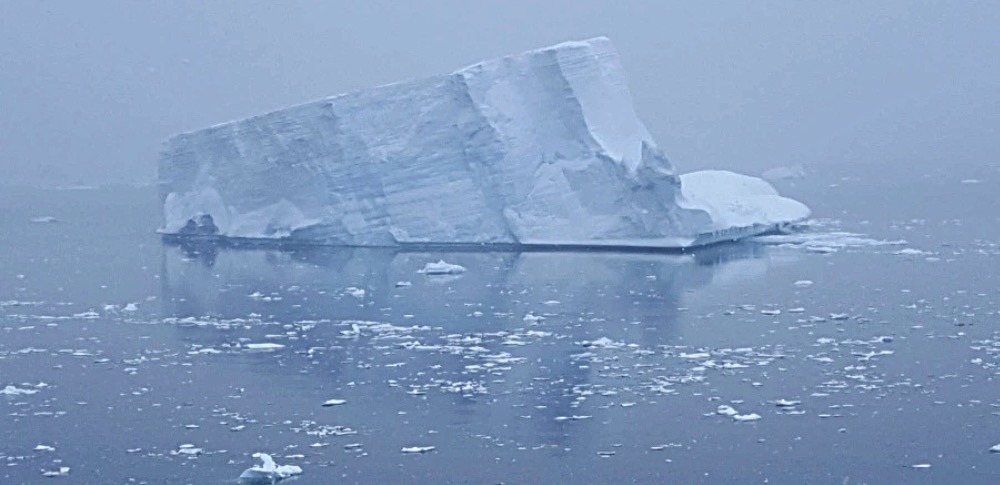Back in 1989, a consultant named Sidney Yoshida published a study of mid-sized Japanese businesses entitled “Quality Improvement and TQC Management at Calsonic in Japan and Overseas”. His study included one especially fascinating idea — a statistic that continues to show up, thirty years later on Internet sites, in articles and essays, and in various illustrations like these:
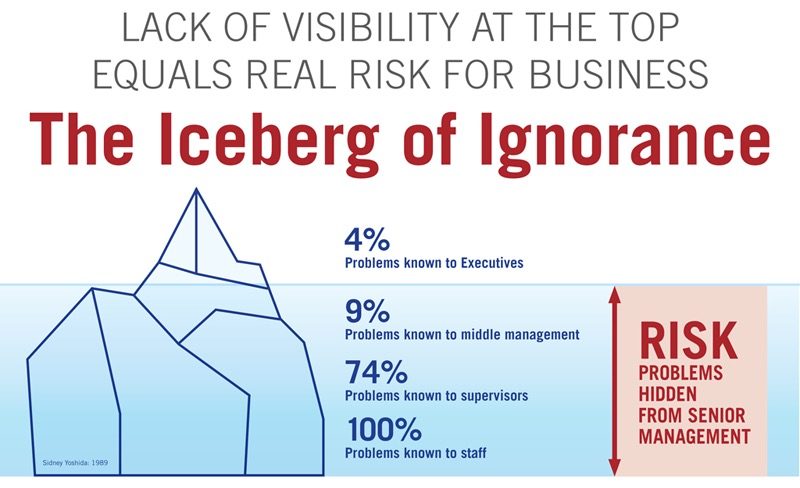
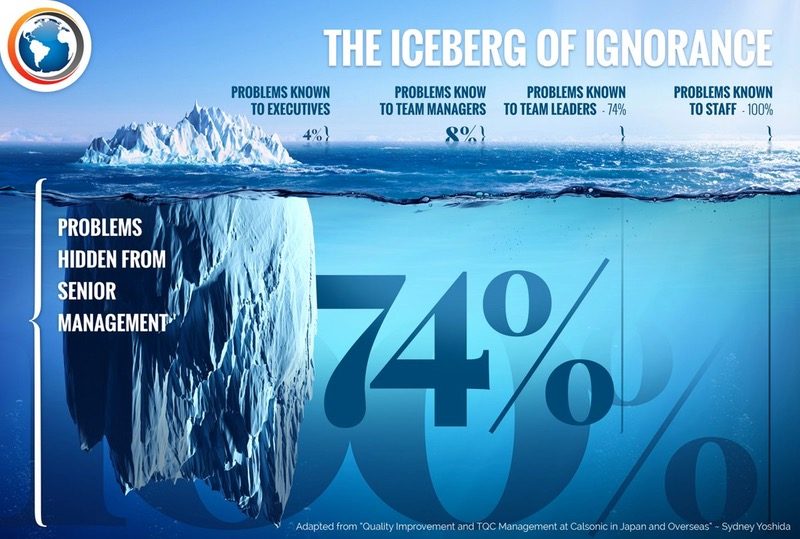
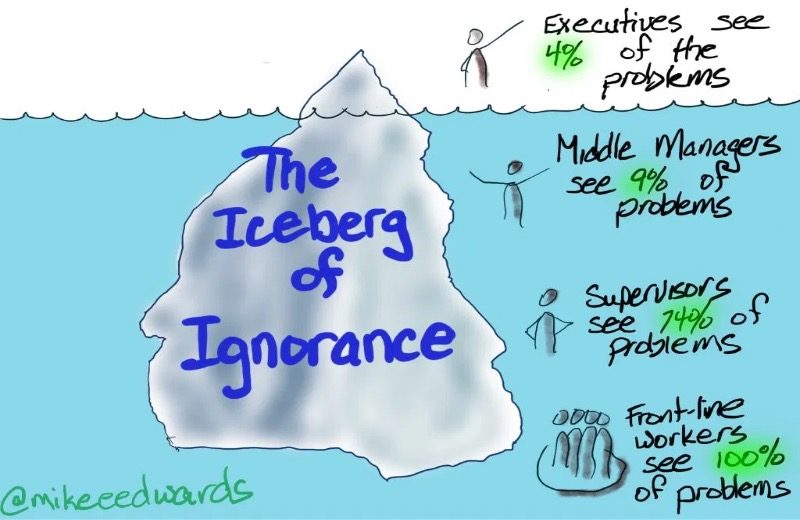
As you see implied by these illustrations, Mr. Yoshida had concluded that one of the barriers to quality improvement in Japanese companies was the fact that the front-line employees were aware of 100% of the quality control problems occurring on front line, but the executives at the top were aware of only 4% of those problems.
In other words, the people making the key company decisions were mainly unaware of the quality control issues.
Many people have written about this “Iceberg of Ignorance” concept, and some have suggested that the situation is unavoidable — that senior management has its own problems to deal with, about which the front-line employee may know little or nothing. The executives might be dealing with an international trade war, for example. They might be fending off a hostile takeover, or conducting one of their own.
In other words, it’s a trade-off. You can’t know everything about your company, no matter where you fit into the hierarchy. You are going to be ignorant about something. Whether you sit at the top of the hierarchy, or work the production line, you will be unaware of certain issues.
I suppose the same is true of government?
Ignorance is not the same thing as stupidity, of course, although they sometimes go hand in hand. I’m ‘ignorant’ if I haven’t yet been exposed to the necessary information. Stupidity means that I’m unable to understand the information I receive, or inept at using the information.
I had the pleasure of attending the Southwestern Water Conservation District 37th Annual Water Seminar on Friday, November 1, as a board member for the San Juan Water Conservancy District (SJWCD). Nearly every seat in the banquet room at the Doubletree Hotel in Durango was occupied with people who, I assume, have a lot more experience with Colorado water issues than I have — ranchers, water district managers, politicians, engineers, district board members, tribal representatives.
Five of our seven SJWCD board members attended the seminar. We currently have an interesting mix of backgrounds and perspectives on the SJWCD board, although not a lot of experience with the actual delivery of water. As in any group situation, the iceberg is sometimes evident.
Much of the conversation at Friday’s Annual Water Seminar referenced the Colorado Water Plan, approved in 2015 during the Hickenlooper administration, and many of the folks in the banquet hall were no doubt involved in the creation of the plan. As we have learned since 2015, one huge detail was missing from the final draft. The authors neglected to clarify where the money would come from to fund the specified projects.
That 2015 plan was recently reappraised by the Colorado Water Conservation Board, and we got an estimate that the planned projects, if undertaken, would cost someone about $40 billion. That’s only a rough estimate, however, because although the Colorado Water Plan called out 1,096 water projects, it included cost estimates for only 179 of those projects.
For southwest Colorado — our neck of the woods — 217 water projects were included in the plan. Only one (1) project had an estimated cost.
At last Friday’s seminar, we were treated to a number of presentations, including a fully-illustrated lecture about weather prediction by Brian Bledsoe, the meteorologist with KKTV in Colorado Springs. Mr. Bledsoe bemoaned the lack of investment in weather science by the Trump administration, but nevertheless feels that weather prediction has improved by leaps and bounds over the couple of decades, and he believes that, in the not-too-distant future, meteorologists will be able to predict major weather events 18 months in advance. This ability would be a game changer for the agriculture industry.
We also heard a great deal of discussion about the the possible use of Demand Management, a proposed method for directing additional Colorado water into Lake Powell. Water engineers have determined that there’s a significant risk of Lake Powell reaching the critical elevation of 3,525 feet of elevation within the next few years.
That particular elevation doesn’t have much to do with actual water supplies, so much as with hydroelectricity. 3,525 feet would put the reservoir’s water level below the intakes for the Glen Canyon Dam hydroelectric generators, the system that supplies below-market-rate electricity to around 3.2 million customers. As the water levels in Lake Powell have declined, however, the generating capacity has dropped by about half, according to a 2016 report by Power Economic Consulting. That same report calculated that, if Glen Canyon Dam stopped generating electricity completely, other generating facilities could easily fill the gap, and the absence of Lake Powell’s generation would increase the cost of electricity to existing residential customers by about $.08 per month.
Commercial and industrial users would pay considerably more per month, as a result of losing their government-subsidized electricity.
The loss of Lake Powell’s storage capacity has perhaps larger implications for the State of Colorado, because of a multi-state commitment to deliver approximately 7.5 million acre feet of water each year down the Colorado River. That promise, dating from 1922, does not line up well with the expected growth of Colorado’s population over the next 30 years or so, nor does it align well with possible climate warming, nor even with the average amount of water flowing down the Colorado River.
So some folks have come up with a proposal to pay farmers and ranchers — the folks who currently use 85 percent of Colorado’s water — to stop irrigating their fields in future drought situations, and allow the water to flow downstream into Lake Powell. The amount of water some people think we need to purchase or otherwise conserve in order to meet our 1922 commitment seems to be in the 500,000 acre-foot range. This is the essence of ‘Demand Management’ as I understand it.
One important part of the Demand Management iceberg — one part we are still ignorant about — is what it might cost to purchase 500,000 acre feet of water from various water users, and where the money would come from to pay the bill.
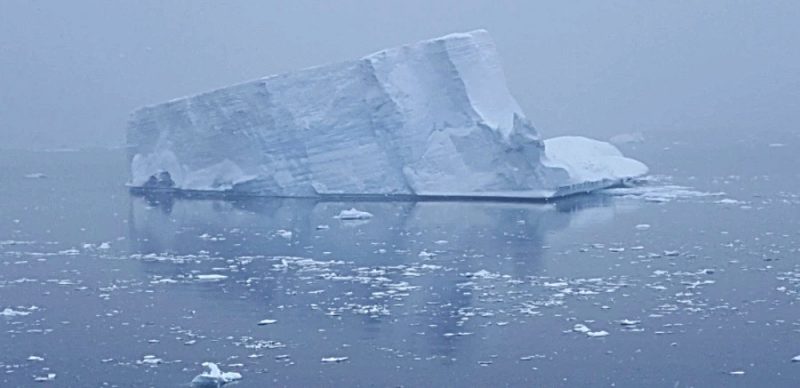
There’s so much about which we are ignorant. Do our farmers and ranchers want to sell their water and let their fields go fallow? What price would they ask? Where would the money come from?
Would big corporations buy up our Colorado farms and fallow the fields, so they can profit from selling the water?
Would this (crazy?) plan fail, in the long run, to save Lake Powell? Would it save more water if we simply tore down the Glen Canyon Dam and allowed the water to flow into Lake Mead?

